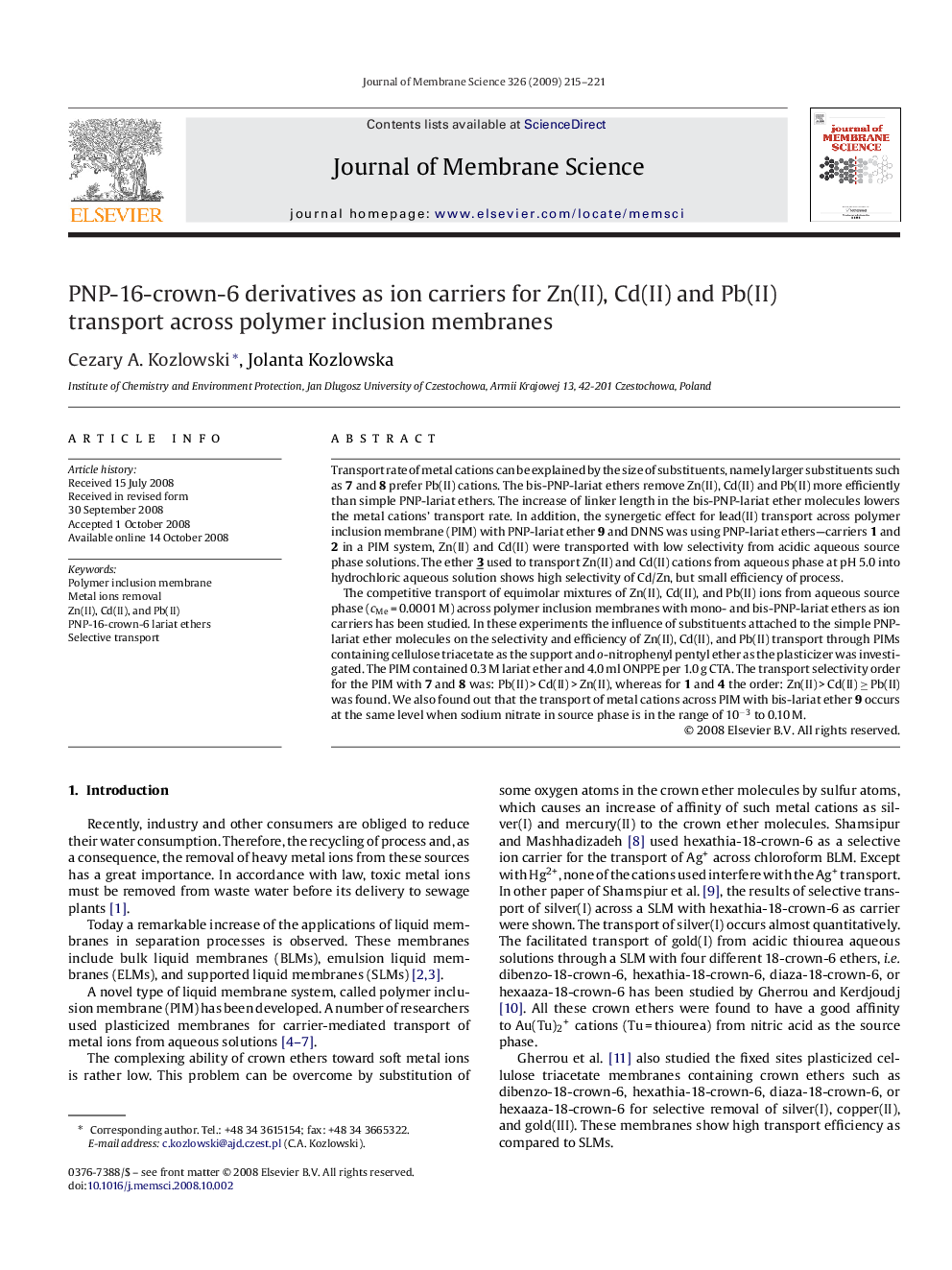| Article ID | Journal | Published Year | Pages | File Type |
|---|---|---|---|---|
| 637271 | Journal of Membrane Science | 2009 | 7 Pages |
Transport rate of metal cations can be explained by the size of substituents, namely larger substituents such as 7 and 8 prefer Pb(II) cations. The bis-PNP-lariat ethers remove Zn(II), Cd(II) and Pb(II) more efficiently than simple PNP-lariat ethers. The increase of linker length in the bis-PNP-lariat ether molecules lowers the metal cations’ transport rate. In addition, the synergetic effect for lead(II) transport across polymer inclusion membrane (PIM) with PNP-lariat ether 9 and DNNS was using PNP-lariat ethers—carriers 1 and 2 in a PIM system, Zn(II) and Cd(II) were transported with low selectivity from acidic aqueous source phase solutions. The ether 3 used to transport Zn(II) and Cd(II) cations from aqueous phase at pH 5.0 into hydrochloric aqueous solution shows high selectivity of Cd/Zn, but small efficiency of process.The competitive transport of equimolar mixtures of Zn(II), Cd(II), and Pb(II) ions from aqueous source phase (cMe = 0.0001 M) across polymer inclusion membranes with mono- and bis-PNP-lariat ethers as ion carriers has been studied. In these experiments the influence of substituents attached to the simple PNP-lariat ether molecules on the selectivity and efficiency of Zn(II), Cd(II), and Pb(II) transport through PIMs containing cellulose triacetate as the support and o-nitrophenyl pentyl ether as the plasticizer was investigated. The PIM contained 0.3 M lariat ether and 4.0 ml ONPPE per 1.0 g CTA. The transport selectivity order for the PIM with 7 and 8 was: Pb(II) > Cd(II) > Zn(II), whereas for 1 and 4 the order: Zn(II) > Cd(II) ≥ Pb(II) was found. We also found out that the transport of metal cations across PIM with bis-lariat ether 9 occurs at the same level when sodium nitrate in source phase is in the range of 10−3 to 0.10 M.
